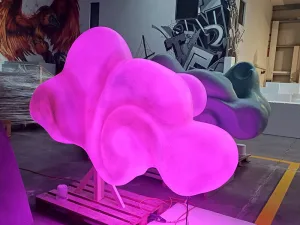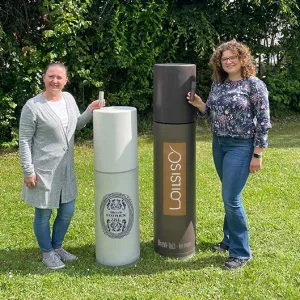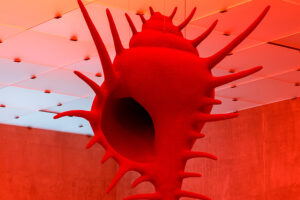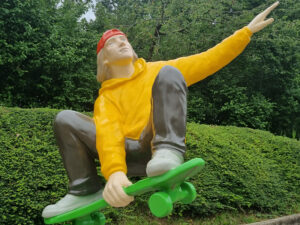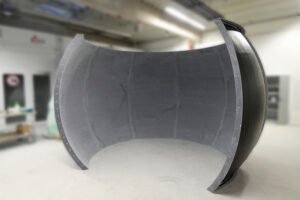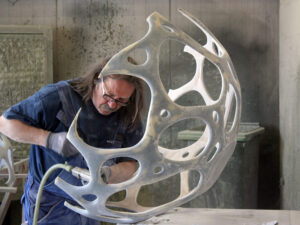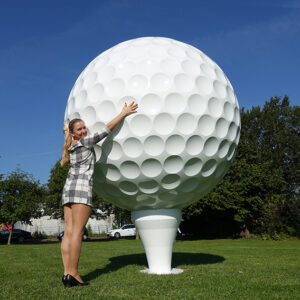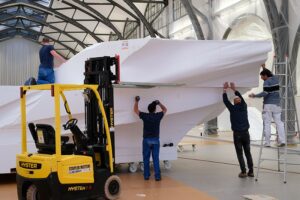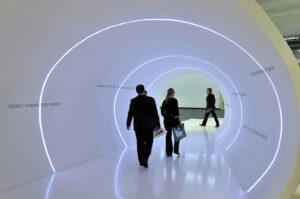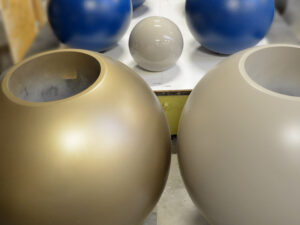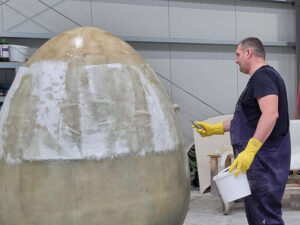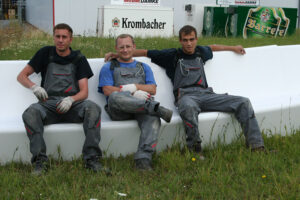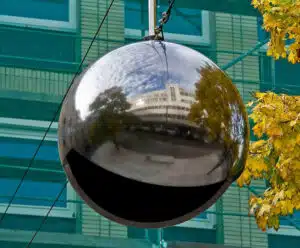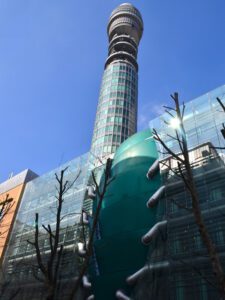With a sphere diameter of 3 meters, ACCENTFORM has produced the world’s largest one-piece mirror ball for the ILA exhibition in Berlin. The idea was to depict mirror-image and distorted lettering on the ceiling of the exhibition hall through the mirror ball in such a way that the lettering on the ball appears straight, while all other images in the ball appear distorted.
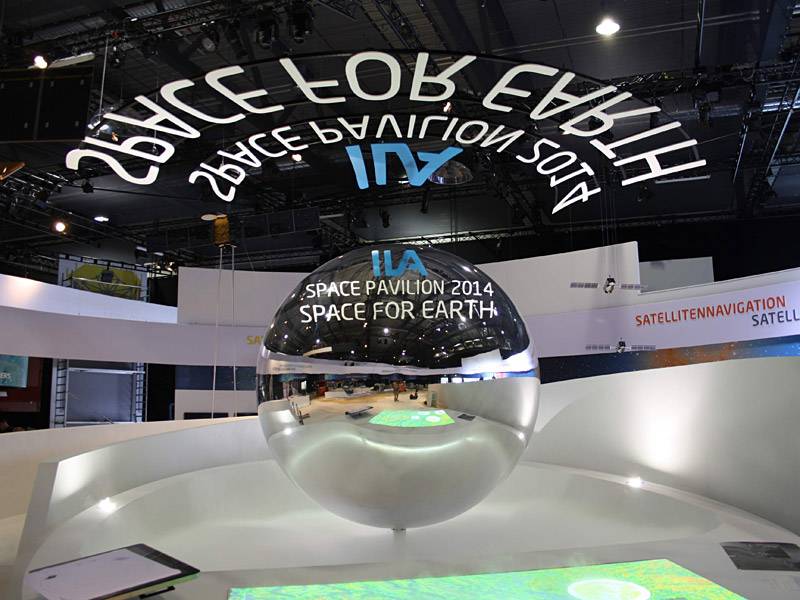
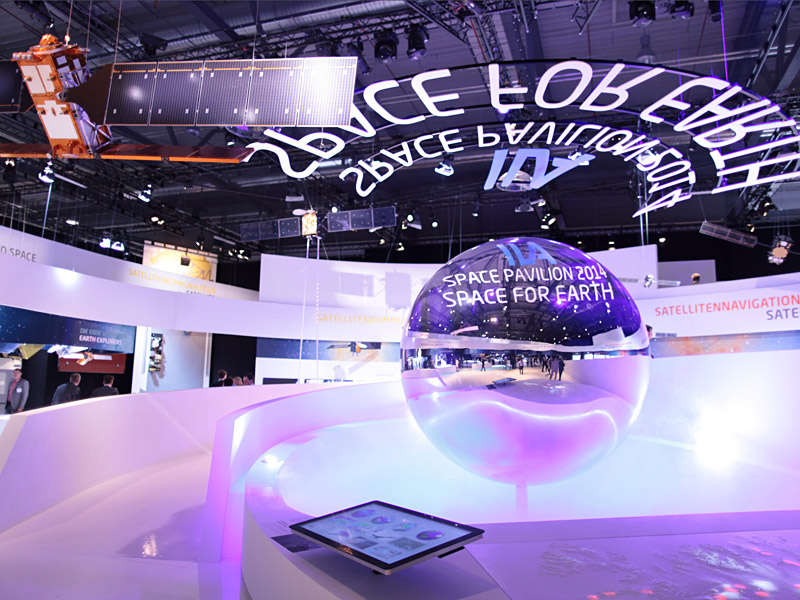
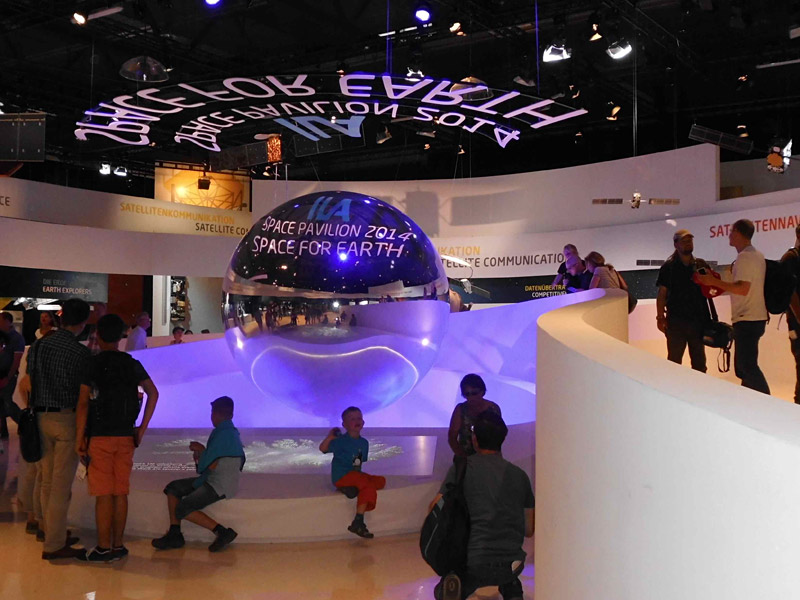
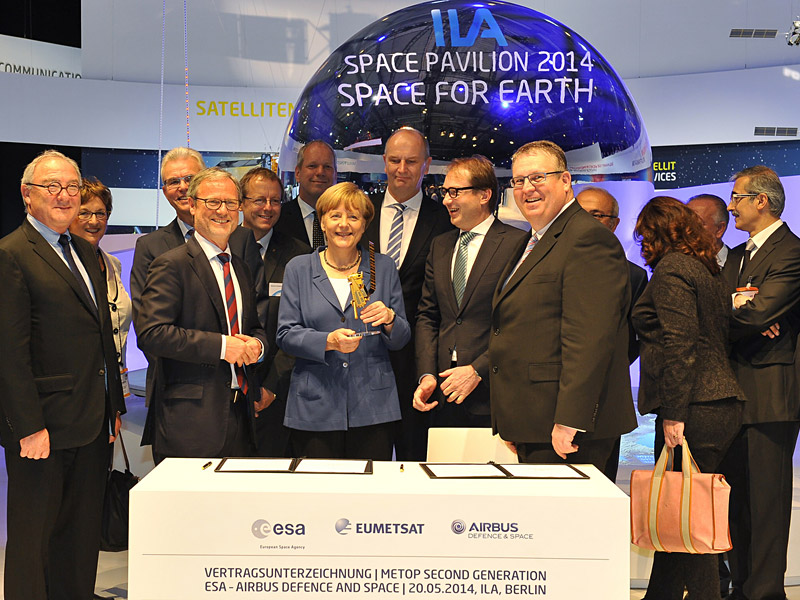
The manufacture of mirrored objects requires a high level of production engineering and very exclusive know-how. Mirrored surfaces do not forgive the slightest mistake. Every pimple, every imperfection is immediately visible thanks to the mirror effect. This is why every step in the production of the mirrored sphere requires the highest quality workmanship.
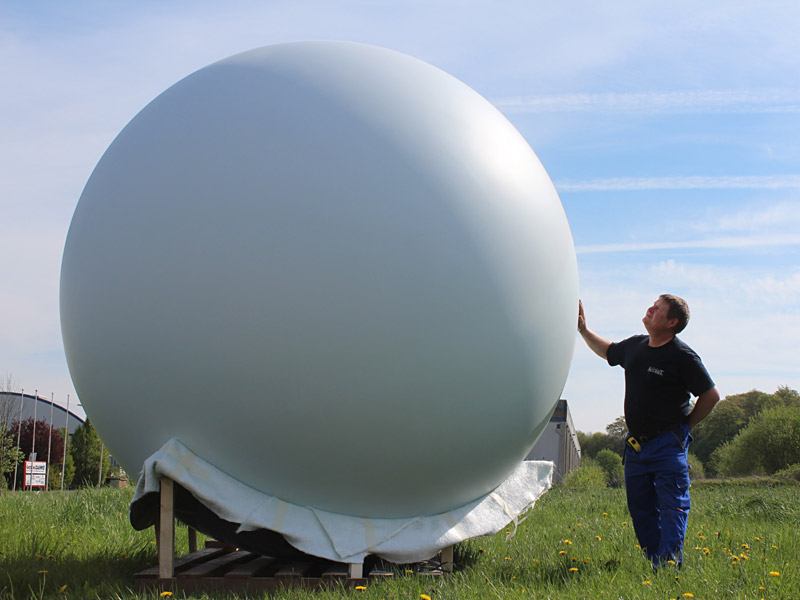
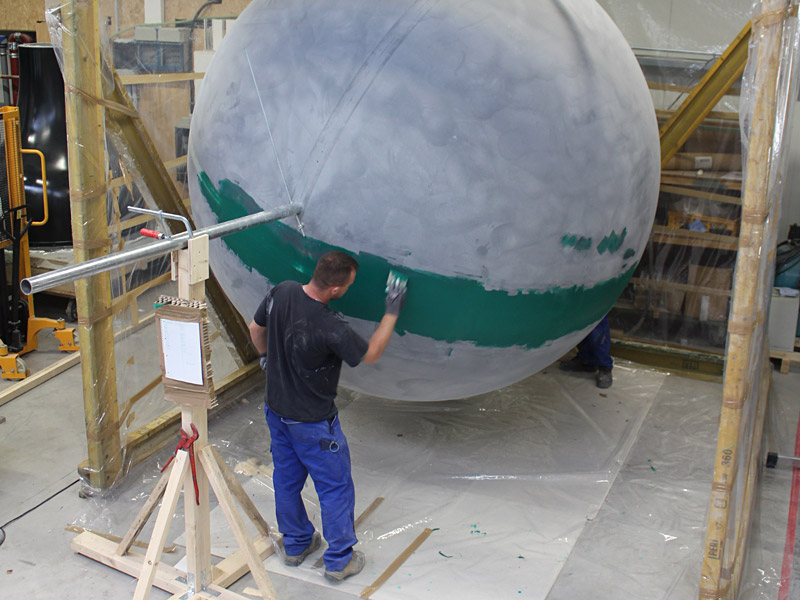
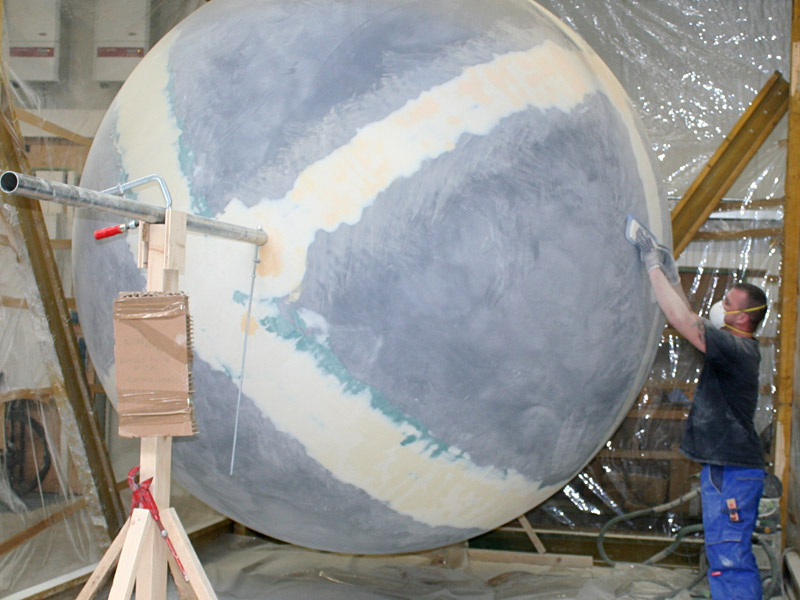
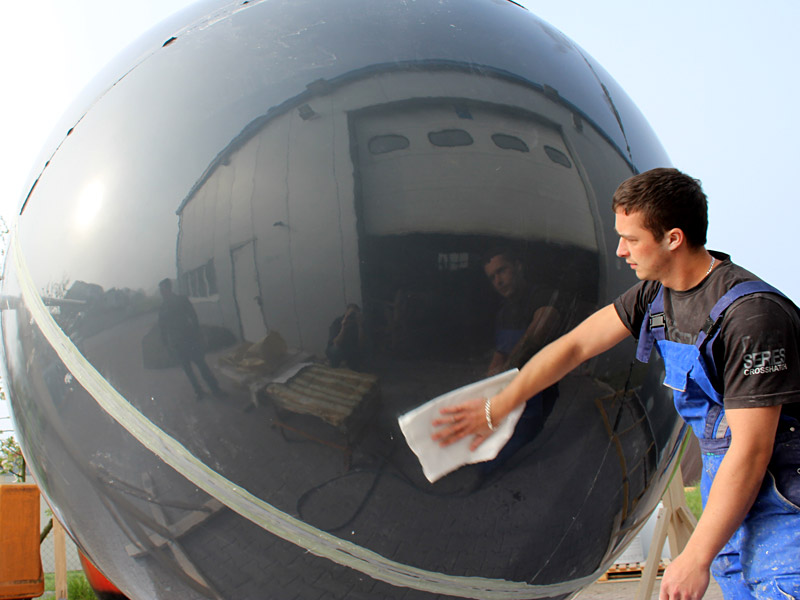

First, the 3m sphere is laminated from two halves with a wall thickness of approx. 4 mm in glass fiber reinforced plastic. The two half shells are then put together to form a sphere. In order to conceal the seam permanently and securely, the area is ground in from the outside and covered with an additional GRP laminate. The raw ball is then tempered for hours at approx. 75° degrees. Annealing (heating over a longer period of time) causes the air bubbles trapped in the laminate to expand and become visible on the surface of the ball. These defects are pierced and ground out during the tempering process. These imperfections are then filled. The tempering process also results in “post-curing”. The high temperatures stimulate the non-cross-linked molecules to join together. The proportion of chemically unbound molecules in the fresh GRP laminate can be up to 3 %. After tempering, the laminate is cured to such an extent that deformation due to “creep” can no longer occur in the long term. Only now is the basis created for leveling out the smallest geometric unevennesses by filling and sanding. The sphere then receives a filler application, which forms an initial barrier between the GRP laminate and the subsequent mirror coating.
Further processing of the mega sphere was then carried out at the Blach company in Ansbach. For decades, Blach has specialized in mirroring the surfaces of works of art, vehicles and luxury products. Products that are mirrored using a chemical spraying process must be completely rinsed with an aqueous solution during the mirroring process. This meant that the ball had to be picked up and turned using an oversized skewer.
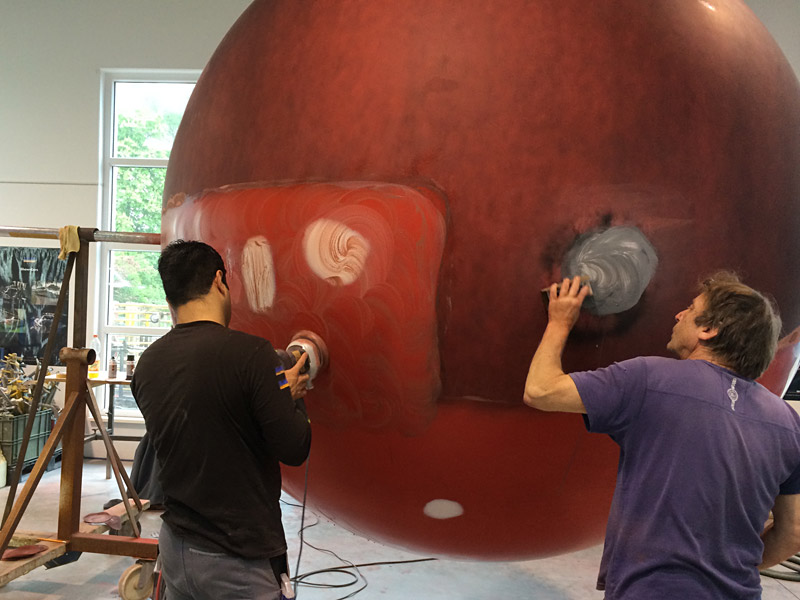

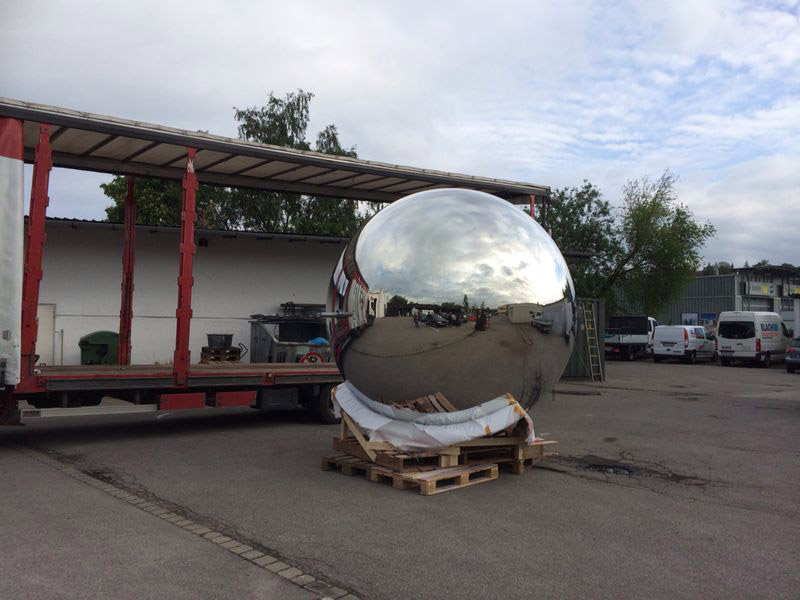
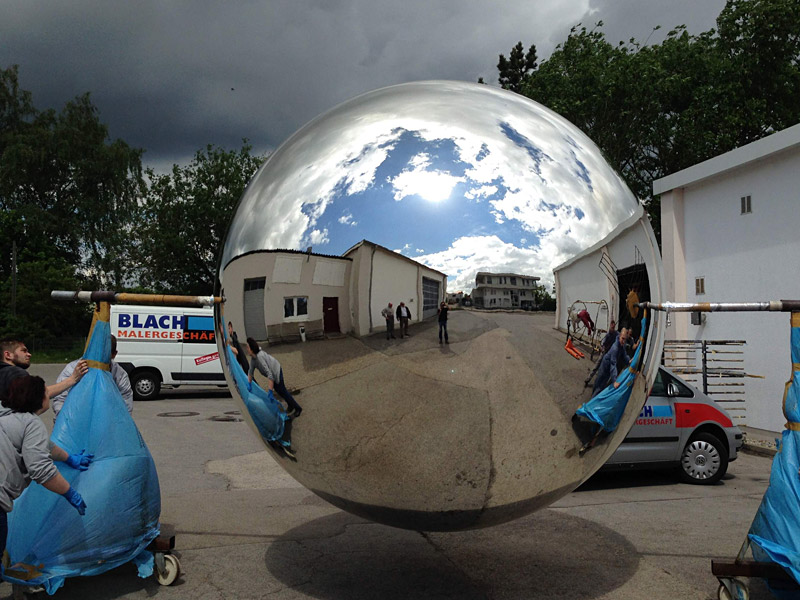
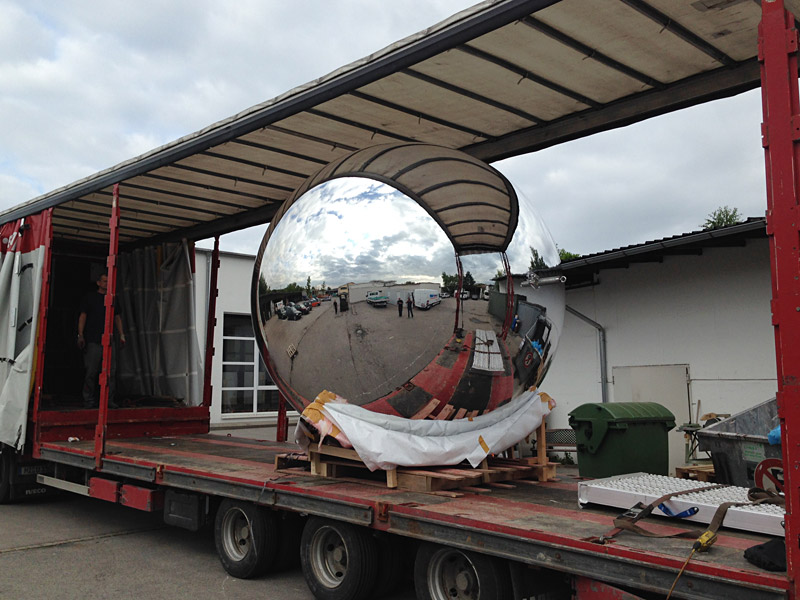
The first step is pre-painting to achieve a smooth surface. This pre-painted surface is wet-sanded again to remove the smallest irregularities and inclusions. A base coat is then applied to create a brilliant surface. The chemical metallization is then applied using silver colloids. The silver colloids consist of tiny silver platelets that are only a few molecules thick. These silver flakes are deposited on the surface of the base coat and form the actual mirror surface. Any impurities and disturbances on the surface cause the silver colloids not to align themselves evenly, making the mirror surface matt. These errors can no longer be corrected, as a result the entire component must be sanded again and given a new base coat. After mirror coating, the surface, which consists of pure silver, is given a clear coat. The clear lacquer is intended to protect the silver from corrosion and mechanical damage.
You are currently viewing a placeholder content from YouTube. To access the actual content, click the button below. Please note that doing so will share data with third-party providers.
More InformationProject details
Dimensions/weight
Ball diameter: 2.95 m
Surface area: 28 m²
Weight: 180 kg
Project number
P14017
